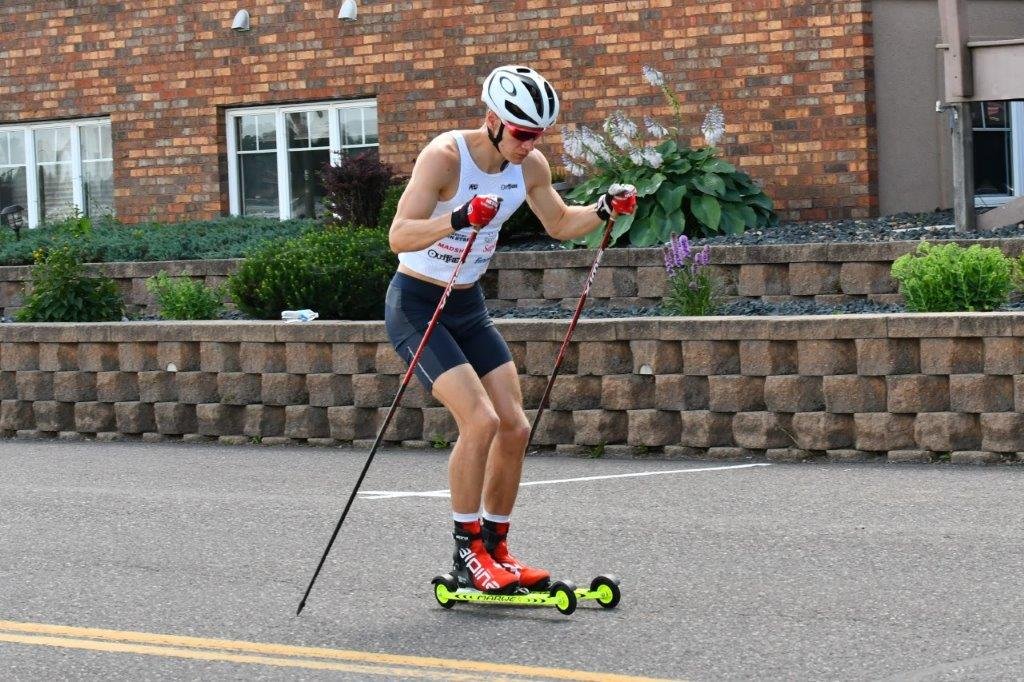Cool Downs: Real or a Hoax?
Preface
Cooling down is an easy exercise, done after a more intense activity, to allow the body to gradually transition to a resting or near-resting state.
Cooling down after the Shoreline Sprint race in Rice Lake, WI.
There are a great many things in our lives that we accept as truths. Most are both scientifically proven and can be confirmed anecdotally, like the presence of gravity. Physicists can cite all sorts of complex equations to prove that the forces of gravity are constantly trying to pull us toward the center of the Earth and we can prove their point anecdotally by the fact that we don’t float away when we are sleeping. Cases like these are easy to accept as truths because the science agrees with our individual experiences.
But what if some of the things we most commonly accept as fact are, in fact, wrong?
Take, for example, the following statement:
“You should always wash your hands with hot water because you will kill more germs that way.”
Unless your name is Fred Flintstone, you’ve almost surely heard this one before. I would argue it is “common knowledge” that warm water is preferable to cold water when it comes to handwashing. It is a truth that is so reinforced in our minds that we think about it multiple times daily. Anecdotally, I can tell you that my hands feel cleaner when I use warm water. But what does the science say? Here are some passages from two different studies:
“Multiple government and health organizations recommend the use of warm or hot water in publications designed to educate the public on best practices for washing one’s hands. This is despite research suggesting that the use of an elevated water temperature does not improve handwashing efficacy, but can cause hand irritation. There is reason to believe that the perception that warm or hot water is more effective at cleaning one’s hands is pervasive, and may be one factor that is driving up unnecessary energy consumption and greenhouse gas emissions.” (Link)
“Water temperature as high as 38°C (100°F) and as low as 15°C (60°F) did not have a significant effect on the reduction of bacteria during hand washing; however, the energy usage differed between these temperatures.” (Link)
These studies indicate that not only is cold water just as effective for washing your hands, but it actually saves a significant amount of energy as well. Turns out what actually matters is lather time — how long you rub the soap into your hands before rinsing.
For temperature to actually make a difference, the water has to reach about 140 degrees Fahrenheit. For reference, water will burn the shit out of your hands at 120 degrees.
What is my point, you ask? Well, if the age-old warm water rule is a hoax, perhaps there are other things we accept as truths that are actually not supported by science. Common knowledge in endurance sport training says that you should always cool down after intense exercise to maximize recovery. Is it the truth, or just another warm water scenario?
Cooling Down: My Personal Experience
In cross-country skiing, as well as nearly all sports, cooling down after a hard workout is considered an essential first step in the recovery process. So far in my own skiing career, I have almost always followed my races and intervals with 15-20 minutes of very low intensity aerobic activity.
There are several reasons why I have always done cool downs.
My coaches have always stressed the importance of cooling down.
Cooling down became a habit over the years.
Every skier I know cools down, so why shouldn’t I?
As my annual training volume increased, I began to view 15-20 minute cool downs as additional training time.
An interval workout could be 75 minutes without a cooldown, or 90 minutes with one. If I have an hour goal for the year, that time really adds up over the months.
Cooling down after intervals or races is often social, as it gives you time to debrief the session with your teammates or competitors.
Cooling down feels nice mentally as a chance to calm down before finishing the workout.
Hopping straight into your car directly after finishing a hard workout feels terrible. I have had to do it a few times when I was in a big hurry.
Leo and I after the last race of the season (NCAA Championships 20K Skate). I did not cool down after this race.
Cooling Down: The Actual Data
Before I get into this, I think it needs to be said that no scientific study is perfect. Even the best studies are still subject to issues like human error or inaccurate data collection. That being said, the study I will quote here is a narrative review that examines several different studies into the psychophysiological side of active cooldowns. In other words, this study examined whether cooldowns had a benefit from both a body AND mental perspective.
Here is, in my opinion, the most interesting line from this study:
“Most evidence indicates that active cool-downs do not significantly reduce muscle soreness, or improve the recovery of indirect markers of muscle damage, neuromuscular contractile properties, musculotendinous stiffness, range of motion, systemic hormonal concentrations, or measures of psychological recovery. It can also interfere with muscle glycogen resynthesis. In summary, based on the empirical evidence currently available, active cool-downs are largely ineffective for improving most psychophysiological markers of post-exercise recovery, but may nevertheless offer some benefits compared with a passive cool-down.” (Link)
This study suggests that cooldowns don't produce any significant positive changes in the body versus skipping the cooldown altogether. Moreover, cooldowns can even slow down the recovery process by further depleting your carbohydrate stores from the additional exercise.
The suggested benefits actually seem to be centered around the psychological side of the spectrum.
“…most individuals nevertheless perceive an active cool-down as more beneficial than a passive cool-down. Reasons reported for doing an active cool-down include relaxation, socializing and time to reflect on the training or match.” (Link)
“…the perception of a recovery modality can also have a major influence on its effects.” (Link)
This appears to suggest that a cooldown could be as good or as bad as you think it is. Our minds are responsible for such a big part of our athletic performance that if we believe we are better recovered then we will probably perform better. The classic placebo effect.
This study does not satisfactorily answer the big question at hand, but I think it at least casts enough doubt towards cooldowns to at least be taken into consideration.
Conclusion
Here is my advice when it comes to active cooldowns. This advice is based on what I have found to be most successful in my career, as well as common sense.
If you are going to do a cooldown, keep it under 20 minutes.
Never use a cooldown as a means to add lots of volume to a session. I have seen it all the time. A skier finishes their workout in an hour and then cools down for another hour because they want to get 2 hours that morning. This is just garbage training time.
Always change into dry clothes and make sure you are warm before a cooldown. If you are very cold, just skip it.
If you do a workout in freezing rain and your clothes are completely soaked, it is absolutely not worth freezing your ass off for another 20 minutes cooling down. You are much better off changing into dry clothes or just rushing home to take a hot shower.
The intensity of the cooldown should be significantly lower than your warmup and workout.
If you are going to cool down, you should basically be walking. Your body is in a very fragile state after a hard workout or race and going too fast on your cooldown will only make you more tired.
That’s it! Whether you choose to cool down or not after your next workout or race, I urge you to consider these suggestions. The bottom line is that it’s not that big of a deal if you don’t cool down. Do it if you want and if you enjoy it, but don’t do it when it doesn’t make sense.
My dog “Gracie” and I doing a core workout. I don’t do cooldowns after strength. Gracie never cools down.





